#early bronze age
Explore tagged Tumblr posts
Text
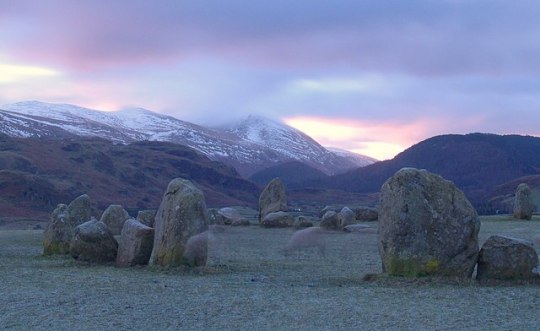
#ac valhallacore#raise fell#Castlerigg Stone Circle#magical places#wanderlust#dawn#dawnwave#dawncore#2008#sunrise#sunrise aesthetic#fell#england#uk#british liminal#keswick carles#carles#cumbria#megalithic#megalith#megalithcore#late neolithic#early bronze age#prehistory#Castlerigg#druid#druids#druidcore
16 notes
·
View notes
Text
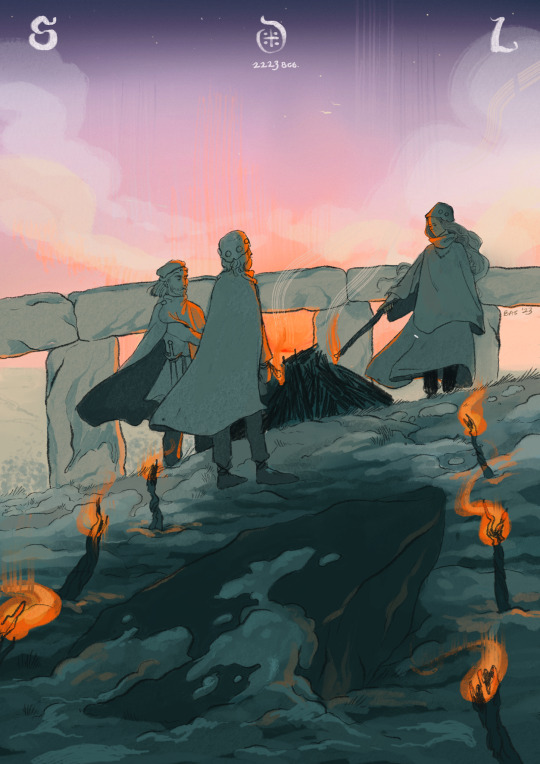
sundown at solstice (2223BCE)
merry midwinter folks!!
#winter solstice#oc art#stonehenge#folk art#the chief#chief’s life and lore#digital illustration#artists on tumblr#original comic#the lonely barrow#celtic folklore#bronze age#early bronze age#late Neolithic#happy solstice
132 notes
·
View notes
Text

"Stargazer", a statuette of a woman (c. 3300–1200 BCE) from Western Anatolia
(more info)
39 notes
·
View notes
Text

Neolithic or Early Bronze Age thin-butted axe from Denmark (flint, c. 2400-1000 BC)
from here
17 notes
·
View notes
Text
Say hello to an ancestoress
More than 4,000 years ago, a young woman who died in what is now Scotland was buried in a crouched position within a stone-lined grave. She remained buried for millennia, until excavators at a stone quarry unexpectedly unearthed her bones in 1997.
Little is known about the woman — dubbed Upper Largie Woman after the Upper Largie Quarry — but now, a new bust-like reconstruction reveals how she may have looked during the Early Bronze Age.
The reconstruction, which went on display Sept. 3 at the Kilmartin Museum in Scotland, shows a young woman with dark braided hair who is wearing a deer-skin outfit. And she appears to be looking at someone nearby.
"Making a reconstruction I usually think that we are looking into their world, [meaning] they don't see us," Oscar Nilsson, a forensic artist based in Sweden who crafted the woman's likeness, told Live Science in an email. "I thought it could be an interesting idea to twist this a bit, and actually thinking that she can see us. And as you can see, she looks a bit critical to us (I don't blame her for that...)!"

Upper Largie woman, who died in her 20s, lived during the early Bronze Age of Scotland. (Image credit: Oscar Nilsson)
After the discovery of Upper Largie Woman, a skeletal and dental analysis revealed that she likely died in her 20s and experienced periods of illness or malnutrition. Radiocarbon dating found that she lived between 1500 B.C. and 2200 B.C., during the Early Bronze Age, according to the museum. Meanwhile, a look at different isotopes, or versions of strontium and oxygen from her remains suggested that she grew up locally in Scotland, but the team wasn't able to extract her DNA, so her ethnic heritage, including her skin, eye and hair color, is unknown.
However, archaeologists found sherds of Beaker pottery in her grave, hinting that she was part of the Beaker culture, named for its peoples' bell-shaped beakers. Research suggests that the Beaker culture started in Central Europe with people whose ancestors came from the Eurasian Steppe. Eventually, the Beaker culture reached Britain in about 2400 B.C. DNA evidence indicates that the Beaker culture replaced most of Britain's inhabitants, including the Neolithic communities that had built monuments such as Stonehenge.
"The carbon dating suggests she might be a descendant of the first Beaker newcomers," Sharon Webb, director and curator of Kilmartin Museum, told Live Science in an email.
For the reconstruction of Upper Largie Woman, her skull was CT (computed tomography) scanned and then 3D printed in Scotland. However, "she lacked her mandible [lower jaw], and her left side of the cranium was in a quite fragmented condition," Nilsson said. "So, the first thing I had to do was to rebuild the left side of her cranium. And then to create a mandible, a rather speculative issue of course."
Then, Nilsson took her age, sex, weight and ethnicity into account, as these factors help determine tissue thickness. "So, in this case: a woman, about 20-30 years of age, signs of undernourishment in a period of her life, and a probable origin from the region," he said.
Nilsson pulled from a chart of modern individuals who fit these characteristics, then used their tissue measurements to begin sculpting the reconstruction. Pegs placed on the replica skull helped him measure the tissue depth, which he then covered with plasticine clay as he molded the facial muscles. Based on her skull's contours, he noted that Upper Largie Woman's eyes were wide set and that her nose was broad and "probably a bit turned upwards." She also had a rounded forehead and a broad mouth.
"I found it interesting that once she was reconstructed, I did not see that much of her malnutrition," Nilsson said. "She had a very rounded facial skeleton, which helped her looking a bit more healthy than she may have been."
However, he was clear that "the colors were all qualified guesses, based on other burials from the time and the region, where the DNA was in better shape than this one."
Webb called the reconstruction "absolutely amazing, we wanted her expression to be asking questions of the visitor, wondering who they are, and what their lives were like so that visitors might also ponder her life."
Upper Largie Woman's remains are now "sensitively 'reburied'" in the same position and orientation she was likely buried in 4,000 years ago, Webb said. Visitors can see her reconstruction at the museum's permanent exhibit.
#Women in history#scotland#Upper largie Woman#Kilmartin Museum#I don't blame her either#Oscar Nilsson#Early Bronze Age#Beaker culture
19 notes
·
View notes
Text

My pottery (part of it, from one box). i'm faster now and can do 70 fragments in 4 hours - thats still not very fast
very beautiful handwriting. nobody writes so neatly today :(

my pottery was found by the father of polish archaeology Erazm Majewski in the last decade of 19th century (or rather by peasant children who were given money to look each year gor artefacts uncovered by wind on sand dunes - he wanted to make a map of all sites in that area). surprisingly it survived both world wars - it's almost a miracle, bc the majority of artefacts in collection of archaeological museum was destroyed during the uprising.
inside the boxes there are small pieces of paper with notes written in ink by Erazm Majewski himself, i suppose. it's really cool. field notes written on fragments of packs of really old cigarettes
4100 years in the ground, 130 years in museum storeroom, and now it's in my hand :)
4 notes
·
View notes
Text
Author: Sonja Anderson Publication: Smithsonian Magazine Timestamp: April 30, 2024 Word Count: 515 Estimated Reading Time: 1.5 to 2.5 minutes
[Note: I left the physical description out, so click through to the article if you want to read that information]
Extracts (Word Count: 289, Estimated Reading Time: 1 to 2 minutes)
A structure [with a unique shape has been discovered] in France …
[The] French National Institute for Preventive Archaeological Research (INRAP) unearthed the monument while excavating a prehistoric site in… Marliens. …
“This type of monument seems unprecedented,” notes INRAP… “As of now, it has been impossible to make a comparison.”
Researchers [used] a “plethora of artifacts” found at the site [to estimate its date]. These include a bundle of seven stone arrowheads, a couple of protective armbands worn by archers, a flint lighter and a copper-alloy dagger.
[T]hese items may date back to the time of the Bell Beaker culture, which originated in the Iberian Peninsula and spread across Europe some 4,500 years ago. …
[E]vidence of human occupation from later periods, including several wells thought to date to the Early Bronze Age, [has also been discovered at the site]. …
[T]he Middle-Late Bronze Age … is [also] represented on site by a necropolis consisting of five circular enclosures. None of the [bones of those buried at the site have survived except those that had been cremated]. But five [copper alloy] pins … and a[n amber] necklace … found nearby suggest … date[s] … between 1500 and 1300 B.C.E.
[A] second necropolis [at the site contains] six urns holding cremated remains, [and] a cache of bracelets and rings. Researchers believe this burial ground dates to the First Iron Age …
…
[S]cholars are … studying the remains to learn … about the funerary practices of the[ir] society ….
The … monument remains this site’s oldest and most unique feature. Researchers have … made no determinations about the structure’s purpose or exact date of creation.
““…radiocarbon analyses are underway to clarify the chronology of this monument.” [the statement says]
#Smithsonian#France#prehistoric#neolithic#article#Bell Beaker#archaeological discoveries#archaeological site#archaeological news#archaeology#ancient#archaeologicaldiscovery#archeology#field archaeology#French National Institute for Preventive Archaeological Research#ancient monument#artifacts#Marliens#first iron age#anthropology#early bronze age#middle-late bronze age#necropolis#drinking wells#cremated remains#urns#burial grounds#Burgandy
0 notes
Text
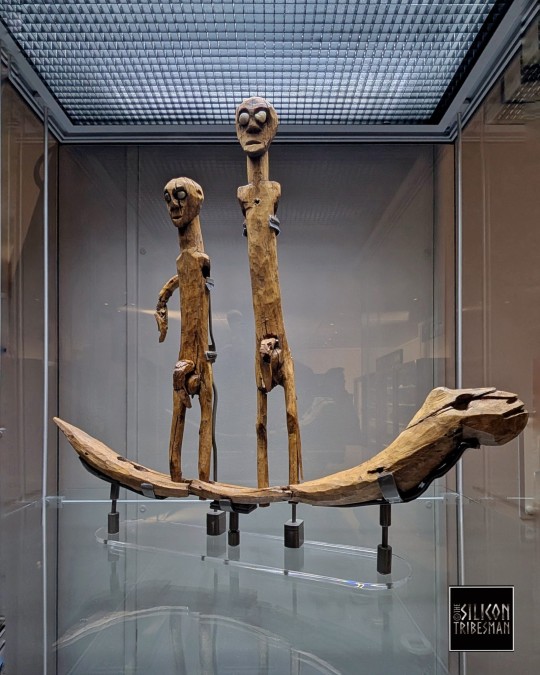
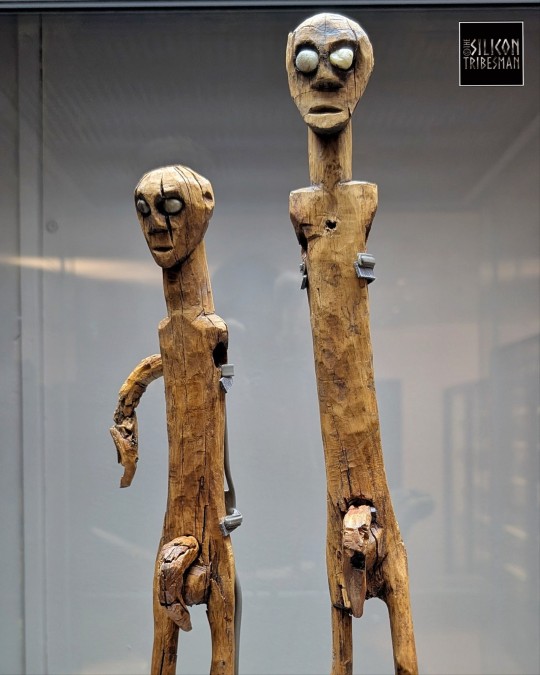

Roos Carr Figures, Late Bronze Age to Early Iron Age (606 to 508 BCE), Yew and Quartzite, The Hull and East Riding Museum of Archaeology, Hull
#ice age#stone age#bronze age#iron age#prehistoric#prehistory#neolithic#mesolithic#paleolithic#archaeology#votive#wooden figures#ancient cultures#ancient craft#ancient living#artwork#figures#early beliefs#roos carr figures
225 notes
·
View notes
Text
Time Travel Question 52: Medievalish and Earlier
These Questions are the result of suggestions a the previous iteration. This category may include suggestions made too late to fall into the correct earlier time grouping. In some cases a culture lasted a really long time and I grouped them by whether it was likely the later or earlier grouping made the most sense with the information I had.
Please add new suggestions below if you have them for future consideration. All cultures and time periods welcome.
We already did the burnings which lost their bracket, but the culture lasted a long time across a big area, and people keep suggesting it.
#Time Travel#Passenger Pigeons#Extinct Species#Birds#North American History#Natural History#Pleistocene#Aotearoa#Moa#Haast's Eagle#Indigenous History#Māori History#Māori Folklore#Māori#Silphium#Ancient World#Neolithic#Cucuteni–Trypillia Culture#Kazakhstan#Archaeology#Bronze Age#History of Disease#Fiber Art#neanderthal#homins#Early humans#History of Fashion
270 notes
·
View notes
Text
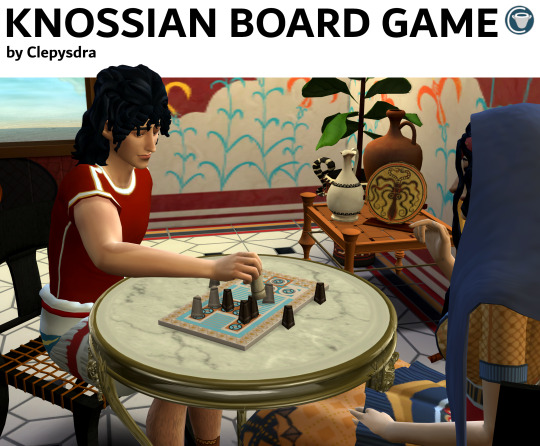

Knossian Board Game
This is modeled after an ancient bronze age artefact unearthed at Knossos, believed by archeologists to be an early board game.
The game is a chess clone and playing it will increase the logic skill.
Make sure when you are placing the object in build mode, you first attach chairs to the board game itself, and then place a table of your choosing underneath the game (using the commands testingcheats true and then bb.moveobjects on). If you do not follow these steps, the sims will not be able to sit and play!
BOARD GAME DOWNLOAD - Dropbox (no ads)
#my cc#my bb cc#sims 4 cc#sims 4 mods#sims 4 buy cc#sims 4 buy mode#sims 4 build and buy#minoan#knossos#bronze age#ts4cc#ts4mm#ts4 history#ts4 early history#ts4 ancient history#ts4 historical#ts4 historical cc#s4cc#ts4 cc
397 notes
·
View notes
Text
remind me to one day draw eva yan with ornaments inspired by the "jewels of helen" panoply. it has to be done
#not jewels of helen btw since it predated helen & priam by hundreds of years.#but it's actually EVEN COOLER beause it's a perfectly preseverd panoply from the EARLY BRONZE AGE dawg...#neigh (blabbers)
22 notes
·
View notes
Text
Irish dress history sources online:
A list of sources for Irish dress history research that free to access on the internet:
Primary and period sources:
Text Sources:
Corpus of Electronic Texts (CELT): a database of historical texts from or about Ireland. Most have both their original text and, where applicable, an English translation. Authors include: Francisco de Cuellar, Luke Gernon, John Dymmok, Thomas Gainsford, Fynes Moryson, Edmund Spenser, Laurent Vital, Tadhg Dall Ó hUiginn
Images:
The Edwin Rae Collection: A collection of photographs of Irish carvings dating 1300-1600 taken by art historian Edwin Rae in the mid-20th c. Includes tomb effigies and other figural art.
National Library of Ireland: Has a nice collection of 18th-20th c. Irish art and photographs. Search their catalog or browse their flickr.
Irish Script on Screen: A collection of scans of medieval Irish manuscripts, including The Book of Ballymote.
The Book of Kells: Scans of the whole thing.
The Image of Irelande, with a Discoverie of Woodkarne by John Derricke published 1581. A piece of anti-Irish propaganda that should be used with caution. Illustrations. Complete text.
Secondary sources:
Irish History from Contemporary Sources (1509-1610) by Constantia Maxwell published 1923. Contains a nice collection of primary source quotes, but it sometimes modernizes the 16th c. English in ways that are detrimental to the accuracy, like changing 'cote' to 'coat'. The original text for many of them can be found on CELT, archive.org, or google books.
An Historical Essay on the Dress of the Ancient and Modern Irish By Joseph Cooper Walker published 1788. Makes admirable use of primary sources, but because of Walker's assumption that Irish dress didn't change for the entirety of the Middle Ages, it is significantly flawed in a lot of its conclusions. Mostly only useful now for historiography. I discussed the images in this book here.
Chapter 18: Dress and Personal Adornment from A Smaller Social History of Ancient Ireland by P. W. Joyce published 1906. Suffers from similar problems to An Historical Essay on the Dress of the Ancient and Modern Irish.
Consumption and Material Culture in Sixteenth-Century Ireland Susan Flavin's 2011 doctoral thesis. A valuable source on the kinds of materials that were available in 16th c Ireland.
A Descriptive Catalogue of the Antiquities in the Museum of the Royal Irish Academy Volumes 1 and 2 by William Wilde, published 1863. Obviously outdated, and some of Wilde's conclusions are wrong, because archaeologists didn't know how to date things in the 19th century, but his descriptions of the individual artifacts are worthwhile. Frustratingly, this is still the best catalog available to the public for the National Museum of Ireland Archaeology. Idk why the NMI doesn't have an online catalog, a lot museums do nowadays.
Volume I: Articles of stone, earthen, vegetable and animal materials; and of copper and bronze
Volume 2: A Descriptive Catalogue of the Antiquities of Gold in the Museum of the Royal Irish Academy
A Horsehair Woven Band from County Antrim, Ireland: Clues to the Past from a Later Bronze Age Masterwork by Elizabeth Wincott Heckett 1998
Jewellery, art and symbolism in Medieval Irish society by Mary Deevy in Art and Symbolism in Medieval Europe- Papers of the 'Medieval Europe Brugge 1997' Conference (page 77 of PDF)
Looking the part: dress and civic status and ethnicity in early-modern Ireland by Brid McGrath 2018
Irish Mantles, English Nationalism: Apparel and National Identity in Early Modern English and Irish Texts by John R Ziegler 2013
Dress and ornament in early medieval Ireland - exploring the evidence by Maureen Doyle 2014
Dress and accessories in the early Irish tale, ‘The Wooing of Becfhola’ by Niamh Whitfield 2006
A tenth century cloth from Bogstown Co. Meath by Elizabeth Wincott Heckett 2004
Tertiary Sources:
Medieval Ireland: An Encyclopedia edited by Sean Duffy published 2005
Re-Examining the Evidence: A Study of Medieval Irish Women's Dress from 750 to 900 CE by Alexandra McConnell
#resources#dress history#irish dress#irish history#early medieval#bronze age#textile history#late medieval#16th century#historical dress
112 notes
·
View notes
Text
Man of the Bell Beaker Culture

The Bell Beaker culture was a prevalent cultural phenomenon which overtook Western Europe from 2800 BCE to 2300 BCE. It also reached Britain in 2500 BCE and lasted there until 1800 BCE and derives its name from the bell-shaped style of pottery which this culture created.
#bell beaker culture#bronze age#early history#ancient history#world history#ancient europe#bell beaker#history art#bronze age europe#history#european history#art#my art#ancient people#anthropology#ancient cultures#culture#humans#ancient europeans#human history
7 notes
·
View notes
Text

Neolithic or Early Bronze Age thin-butted axe from Lolland, Denmark (flint, c. 2400-1000 BC)
from here
7 notes
·
View notes
Text
i am obsessed with how fixated spideyblr is with the comics coffee bean gang and iterations of it — like we're objectively correct, but it's wild how other corners of the spider-man fandom see that part of the canon as ancient, obscure, and cringe?
#it's so strange to be talking to ppl who are spider-man ppl irl and they barely know the early stuff beyond references in modern runs#when i'm like canon peaked in the silver and bronze age and the later bronze age is on thin ice tbh
115 notes
·
View notes
Photo
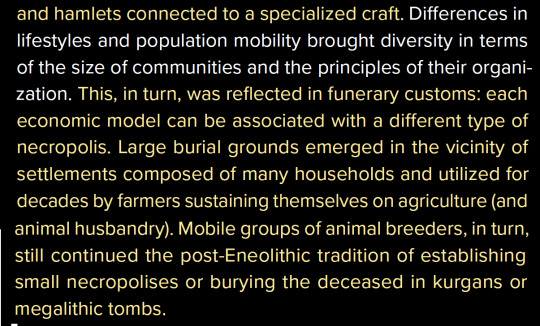
fascinating
2 notes
·
View notes